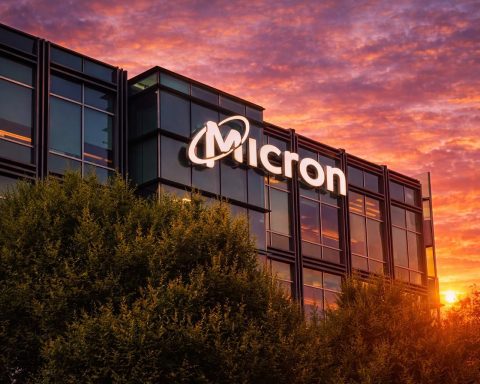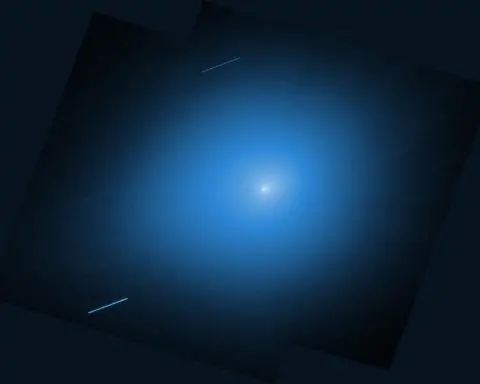- SpaceX conducted two Falcon 9 Starlink launches within 24 hours (July 26 from Florida and July 27 from California), marking SpaceX’s 92nd mission of 2025, with the first booster flying 22nd time and the second booster 19th flight, and both droneship landings bringing the total to 480 recoveries.
- A rare global Starlink outage on July 24 was resolved within hours through software fixes, with SpaceX identifying the bug to prevent a repeat.
- Amazon announced a $139.5 million investment in new Florida facilities to scale up Project Kuiper launches after three prototype satellite batches this year and plans for more.
- China launched the fifth batch of Guowang broadband satellites on July 27 using a modified Long March 6A with strap-on solid boosters, marking the 585th Long March flight and advancing toward a 300+ satellite global internet network.
- NASA and Roscosmos held their first face-to-face senior talks since 2018 at Kennedy during the Crew-11 window, with a July 31 meeting in Houston to discuss extending the ISS and cross-flight arrangements.
- NASA and ISRO’s NISAR mission, mounted on a Geosynchronous Satellite Launch Vehicle Mk II, is scheduled to launch July 30 at 8:10 a.m. EDT from Satish Dhawan Space Centre, carrying dual-frequency L-band and S-band radars to map the planet with centimeter precision, circling in a 747 km polar orbit 14 times per day and repeating global coverage every 12 days over a three-year primary mission.
- China’s Tianwen-3 Mars sample-return plan aims to launch in 2028 and return samples by 2031, using two Mars launches to deliver an Earth-Mars transfer orbiter/return vehicle and a lander, targeting at least 500 grams of material, potentially drilling to 2 meters, and possibly deploying a Mars drone to assist sample retrieval.
- Australia’s Eris-1, a 25-meter, three-stage hybrid rocket from Gilmour Space Technologies, is set for indigenous orbital launch from Bowen in Queensland—the first since 1971—carrying about 215 kg to a 500 km orbit, supported by a A$5 million government grant and plans for a larger Block 2 that could lift 1,000 kg.
- The U.S. Space Force’s X-37B spaceplane will launch on August 21 from Kennedy on a SpaceX Falcon 9 for its eighth mission, testing laser communications with proliferated commercial satellites and a quantum inertial sensor, following the record 908 days in orbit logged by the previous OTV-7 mission.
- In a budget dispute, House Democrats alleged NASA illegally impounded about $6 billion in proposed FY2026 cuts and began realigning staff, including a ‘deferred resignation’ program expected to shed more than 2,000 employees.
It’s been an extraordinarily busy 48 hours for spaceflight across the globe. From record-breaking rocket launches to landmark international collaborations (and even a bit of space diplomacy), the news has been coming in fast. Here’s your comprehensive roundup of all the must-know satellite and space developments from July 28–29, 2025.
SpaceX’s Back-to-Back Starlink Launches Set Record Pace
SpaceX continued its record-smashing launch cadence with two Falcon 9 launches in under 24 hours over the weekend [1]. On July 26, a Falcon 9 lifted off from Florida followed by another from California on July 27 – marking SpaceX’s 92nd mission of 2025 [2]. These “double header” Starlink missions underscore the company’s unprecedented tempo enabled by reusable rockets.
Notably, the first launch’s booster flew for the 22nd time – a new reuse record – and landed safely at sea minutes later [3]. The second mission’s booster (on its 19th flight) also nailed a droneship landing, exemplifying SpaceX’s routine of recycling hardware. This rapid turnaround pushed the Falcon 9 booster recovery count to 480 landings to date [4].
However, even SpaceX isn’t immune to hiccups. Just days prior, Starlink users experienced a rare global outage on July 24 that disrupted internet service. The issue was resolved within hours via software fixes [5]. SpaceX’s Starlink engineering lead Michael Nicolls reassured users the team is “deeply committed to providing a highly reliable network” and had identified the software bug to prevent a repeat [6]. In a sign of healthy competition, Amazon announced a $139.5 million investment in new Florida facilities to ramp up launches of its rival Project Kuiper internet satellites [7]. The tech giant has already launched three batches of prototype Kuiper sats this year and has the next set queued up for liftoff, signaling determination to challenge Starlink’s constellation head-on [8].
China Expands Its Own “Starlink” Rival Network
Not to be outdone, China executed a major broadband constellation launch on July 27 as part of its state-backed “Guowang” network. A Long March 6A rocket lifted off from Taiyuan Satellite Launch Center Sunday evening carrying a new group of low-Earth-orbit satellites for China’s planned space internet system [9]. This was the fifth batch of Guowang satellites (the exact number in this launch wasn’t disclosed), and all spacecraft were successfully delivered to their preset orbits [10]. The mission marked the 585th flight of a Long March rocket – highlighting China’s brisk launch tempo [11] [12].
The Guowang constellation is often compared to SpaceX’s Starlink and aims to provide global broadband coverage via 300+ satellites in LEO once complete [13]. It is managed by the state-owned China SatNet firm. With this launch (nicknamed SatNet LEO Group 05 by insiders), China moves closer to an initial operating capability for the network [14] [15]. Previous groups in this series reportedly consisted of 5–13 satellites each, suggesting a similar count went up in this round [16]. The Long March 6A used was a “modified” variant with strap-on solid boosters for extra lift capacity [17] – a notable innovation blending liquid core stages with solid rockets to achieve medium-lift performance [18].
Chinese officials framed this deployment as a step toward a sovereign space internet to bolster connectivity in remote regions of China and offer services globally (potentially in partnership with other nations) [19]. More launches are slated in quick succession – in fact, China’s manifest remains packed. Within days of this launch, a Long March 7 is scheduled to send a cargo ship to the Tiangong space station, and a Long March 8 will deploy additional internet satellites [20]. All told, China is on track to exceed 60 launches in 2025, racing ahead in the satellite mega-constellation arena alongside U.S. competitors.
Crew-11 Countdown: Astronauts Arrive Amid Static Fire Snag
At NASA’s Kennedy Space Center, four astronauts are gearing up for launch even as their rocket got a last-minute tune-up. SpaceX Crew-11 – carrying three astronauts and one cosmonaut – remains on schedule for liftoff to the ISS on July 31. On Monday (July 28), SpaceX attempted a routine static fire test of the Falcon 9 booster engines as a final checkout, but the test auto-aborted at T–57 seconds due to an out-of-range reading from the launch pad’s transporter-erector arm [21]. The strongback arm had begun to retract for the firing, then unexpectedly returned to its pre-test position about 30 seconds before ignition. NASA later explained that an indicator for the arm’s cradle position caused the abort, even though “the arm functioned correctly” – essentially a false sensor issue [22]. Both the Falcon 9 and Dragon capsule remain healthy on the pad, the agency noted, and teams quickly rescheduled the static fire for Tuesday [23] [24]. Barring further glitches, this will clear the way for an on-time Crew-11 launch Thursday at 12:09 p.m. EDT.
Meanwhile, the Crew-11 members themselves have been busy with last-minute prep. Over the weekend they flew into KSC’s Launch and Landing Facility (the former Shuttle runway) to begin quarantine and training. Stepping off the plane on July 26, NASA astronaut Zena Cardman – who will command the mission – said “this is the first moment that it’s really starting to feel real” that she’s headed to space [25]. Cardman, a microbiologist, is a first-time flyer (and notably the first woman to command a Dragon on her maiden mission) [26]. Joining her are veteran NASA astronaut Mike Fincke as pilot, JAXA (Japanese) astronaut Kimiya Yui and Roscosmos cosmonaut Oleg Platonov as mission specialists [27] [28].
Fincke, preparing for his fourth spaceflight after two Shuttle trips and a long ISS stay, praised the crew’s cohesion: “I’ve been on different crews before, but this one is exceptional,” he said of the international team [29]. The astronauts completed a full dress rehearsal (donning SpaceX suits and boarding the capsule) prior to the static fire attempt, and all systems aside from the pad sensor appear ready. Their spacecraft – Crew Dragon Endeavour – is poised for its record-setting sixth flight [30]. Once launched, Crew-11 will dock with ISS and begin a six-month mission as part of Expedition 73. NASA and its partners are even considering extending the mission to eight months to better align with Russia’s next Soyuz schedule, underscoring the flexibility of crew rotations amid evolving plans [31].
NASA and Roscosmos to Meet at Crew-11 Launch, Rekindling Cooperation
In a remarkable sign of thawing relations, the heads of NASA and Russia’s Roscosmos are set to hold their first face-to-face talks in nearly seven years. Roscosmos Director General Dmitry Bakanov arrived in the United States this week for meetings with NASA’s leadership – the first head-level, in-person space agency talks since 2018 [32] [33]. The timing is no coincidence: Bakanov will be on hand at Kennedy Space Center for the Crew-11 launch, which carries Roscosmos cosmonaut Oleg Platonov under the ISS seat exchange program. On the eve of launch, the Roscosmos chief plans to meet the Crew-11 team in Florida [34], a goodwill gesture highlighting the mission’s international makeup.
Formal discussions will follow on July 31 in Houston between Bakanov and NASA’s acting Administrator, Sean Duffy [35]. According to Roscosmos, “the parties plan to discuss ongoing joint projects” [36] – chiefly, the extension of the International Space Station’s life, continued cross-crew flights, and plans for the ISS’s eventual safe deorbit and ocean disposal when its mission ends [37]. “We plan to discuss the continuation of the cross-flight program, the extension of the ISS’s operational life, and the future safe deorbiting… of the ISS,” Bakanov said ahead of the meeting [38]. These topics are critical: NASA wants to keep the ISS running through 2030, and Russia has signaled it will stay on board through at least 2028, so finding common ground is essential for a smooth transition to whatever comes next.
This high-level dialogue is especially significant given U.S.-Russia tensions in other arenas. Since 2022, most bilateral cooperation has been frozen due to geopolitical strife, but space has remained a rare area of pragmatic collaboration. The fact that Bakanov and NASA leaders are meeting now – and doing so publicly – suggests both sides see value in insulating the space partnership from terrestrial politics. It hearkens back to the joint Apollo-Soyuz handshake in 1975 and the Shuttle-Mir program of the 1990s, reminding the world that space can still be a bridge between nations. In April, NASA and Roscosmos only met at the working level (NASA’s space operations chief visited Baikonur for a Soyuz launch) [39]. Now, by resuming top-level talks, the agencies are signaling a willingness to “reset” communication channels that had gone dormant for years.
NASA–ISRO “NISAR” Earth Satellite Ready for Launch in India
In a showcase of international collaboration, NASA and the Indian Space Research Organisation (ISRO) are about to launch a groundbreaking Earth observation satellite. The NASA-ISRO Synthetic Aperture Radar satellite, known as NISAR, has been mounted atop India’s Geosynchronous Satellite Launch Vehicle (GSLV) and is slated to lift off from Satish Dhawan Space Centre on Wednesday, July 30 at 8:10 a.m. EDT (5:40 p.m. India time) [40]. This mission is the first of its kind, carrying a dual-frequency radar payload that will scan the planet with unparalleled resolution. NISAR’s two radars – L-band (from NASA) and S-band (from ISRO) – make it the world’s first satellite to operate simultaneously on two radar frequencies [41]. This allows it to measure Earth’s changing surface with extreme precision, detecting movements and changes down to a centimeter.
Encased in the nose cone of the 44-meter GSLV Mk II rocket [42], NISAR is about the size of a pickup truck with a sprawling drum-shaped radar reflector. Once in a 747 km polar orbit, it will circle Earth 14 times per day and map virtually the entire globe every 12 days [43]. The mission’s purpose is to track subtle changes in Earth’s land and ice. Scientists will use its data to monitor ecosystems and agricultural crops, measure ground deformation to help predict earthquakes and landslides, and observe ice sheet dynamics and melt rates as climate indicators [44] [45]. By imaging in two radar bands, NISAR can probe various depths and types of terrain – from the moisture in soil to the movement of glaciers.
The partnership behind NISAR is as noteworthy as its science. Under a 2014 agreement, NASA provided the L-band radar, a high-rate communication subsystem, GPS receivers, and data storage, while ISRO contributed the satellite bus, the S-band radar, the launch vehicle and launch services [46]. Both agencies’ logos adorn the rocket, alongside the flags of the U.S. and India – a visible symbol of the collaboration. The mission has even drawn attention from the highest levels of government. Earlier this year, U.S. President Donald Trump and Indian Prime Minister Narendra Modi lauded NISAR as “a critical part of a pioneering year for U.S.–India civil space cooperation”, underlining its diplomatic significance as well [47].
With live launch coverage set to stream on NASA’s and ISRO’s channels [48], the joint team is eager to see years of work come to fruition. If all goes well, NISAR will soon begin its three-year primary mission, sending back terabytes of data. Scientists around the world are standing by – the global science community has free access to NISAR’s data, which could revolutionize our understanding of Earth’s processes and help communities better respond to natural disasters [49] [50]. As one NASA project scientist put it, NISAR is essentially “MRI for Earth”, and it’s about to start scanning.
China Reveals Bold Mars Sample-Return Plan
Hot on the heels of its successful Tianwen-1 Mars orbiter/rover mission, China is planning an even more audacious Martian adventure. Chinese scientists have unveiled details of Tianwen-3, a Mars sample-return mission that aims to launch in 2028 and bring back Mars rocks by 2031 [51]. If successful, this would make China only the second nation to return material from Mars – and the first to do it in one continuous campaign. Hou Zengqian, the chief scientist of Tianwen-3 and an academician at the Chinese Academy of Sciences, outlined the mission’s scope in a recent Nature Astronomy article and media interviews. “The mission will be a critical step in China’s planetary exploration. We hope to provide the international community with an unprecedented opportunity to understand Mars,” Hou said [52]. In essence, China sees Mars sample-return as a prestige project that advances science while demonstrating technological prowess.
According to Hou, Tianwen-3 will involve two launches to Mars (likely on the powerful Long March 5 rockets). One will send an Earth-Mars transfer orbiter and return vehicle, and the other will carry a lander that touches down on Mars to collect samples [53]. The plan is to gather at least 500 grams of Martian soil and rock [54] – over 10 times what NASA’s Perseverance rover is caching for a future return. To do this, China is considering three sampling methods: surface scooping, deep drilling, and even a drone to fetch samples a short distance away from the lander [55]. Notably, Tianwen-3 will not carry a rover; instead, a Mars drone (helicopter) similar to NASA’s Ingenuity could hop out to collect material beyond the immediate landing site [56]. Hou revealed the mission would attempt drilling down to 2 meters for subsurface samples – something never done on Mars before [57] [58]. (Perseverance’s cores are from just a few centimeters beneath the surface, by comparison.)
Bringing the samples home in one go is an enormous challenge. Tianwen-3’s lander will have to launch a small ascent vehicle off the Martian surface to rendezvous with the orbiter – a feat that has been likened to launching a mini-rocket from a moving sand trap, under alien gravity and temperature extremes. The entire round-trip would span about 3 years of flight and surface operations [59]. To make it happen, Chinese engineers are tackling complex problems of orbital mechanics, autonomous rendezvous, and high-speed Earth reentry. Hou emphasized that planetary protection is a top concern: China will adhere to strict protocols to avoid contaminating Mars with Earth microbes and vice versa [60]. A high-security Mars sample receiving lab will be built to quarantine and analyze the returned material safely [61].
Beijing has signaled strong support for this mission – it’s a central piece of China’s ambitious roadmap to become a global space power by the 2030s. Tianwen-3 also complements NASA’s Mars Sample Return effort (a joint project with ESA planned for later this decade). There’s a hint of international competition as well: NASA’s plan involves multiple launches and won’t return samples until at least 2033, whereas China hopes to do it faster and perhaps more efficiently [62] [63]. At the same time, Chinese scientists stress the mission’s scientific value. One primary goal, says Hou, is to search for signs of past life on Mars – “We aim to unravel the mystery of whether life ever existed on Mars,” he said, listing objectives like detecting potential biomarkers, fossils, or chemical traces of life in the rocks [64]. Other goals include studying Mars’ climate history (e.g. ancient water and atmosphere) and its geological evolution by examining pristine samples with lab instruments far more advanced than any rover’s tools [65] [66]. With nine specialized science teams already working on the research plan [67], China is clearly treating Tianwen-3 as a flagship science mission. If it succeeds, it would be one of the most significant “firsts” in space exploration this decade, potentially propelling China to the forefront of planetary science.
Australia’s First Homegrown Orbital Rocket Poised for Historic Launch
In a milestone for the Southern Hemisphere, Australia is about to attempt its first orbital launch in over half a century – using an Australian-built rocket from Australian soil. The rocket, named Eris and developed by Gold Coast-based startup Gilmour Space Technologies, is slated for a maiden test flight from the Bowen Orbital Spaceport in Queensland. After a series of scrubbed attempts earlier in the month, Gilmour announced the launch window is now No Earlier Than July 29 (afternoon local time) for the long-awaited Test Flight 1 [68]. The daily window runs from 7:30 a.m. to 5:30 p.m. AEST, and the team will proceed only if conditions are ideal [69]. If successful, this mission will mark the first time since 1971 that a satellite is launched to orbit from Australia – the last being a 1971 launch of a British Black Arrow rocket from Woomera [70]. It would also make Australia just the 7th country to achieve an indigenous orbital launch, joining an elite club (Russia, U.S., France/ESA, Japan, China, India).
Eris-1 is a three-stage, 25-meter rocket designed to carry small satellites. It uses an innovative hybrid propulsion system: a proprietary Sirius engine that burns a combo of 3D-printed solid fuel and liquid hydrogen peroxide as oxidizer [71] [72]. The first stage has four Sirius engines, the second stage one, and the third stage uses a different liquid engine for final insertion. This approach – if it works – could offer a simpler, safer alternative in the small launcher market. (To date, no orbital-class rocket with hybrid engines has reached orbit, so a success by Eris would be a world-first on that technology front.) Eris is designed to loft about 215 kg to a 500 km orbit, placing it in a similar class to Rocket Lab’s Electron (though a bit taller and more powerful). For this test flight, it will carry a single confidential customer payload to a roughly polar low Earth orbit.
The Bowen launch site itself is brand new – Australia’s first licensed commercial orbital spaceport, built in cooperation with indigenous landowners and opened in 2023 [73] [74]. It offers flight paths out over the Coral Sea for mid-inclination or polar launches. Gilmour’s path to the pad has not been easy: this launch was originally targeted for early July, then slipped. A wet dress rehearsal in mid-July revealed an issue with the payload fairing separation system, requiring hardware replacements [75]. Then uncooperative upper-level winds and weather caused further delays [76]. “Not the outcome we hoped for, but that’s the nature of test flights. Chin up and eyes forward to NET 27 July!” the company wrote after a scrub earlier this month [77]. As they worked through fixes, Gilmour’s team expressed optimism. “We’ve replaced the fairing and mitigated the issue… now aiming for July 28,” the company noted last week [78] (the target later shifted by one more day to the 29th). In a boost of confidence from the government, the Australian Space Agency just awarded Gilmour a A$5 million grant to accelerate development of its next-gen rocket engines [79] [80]. Australian officials clearly have high hopes that a domestic launch industry will blossom from this test.
All eyes in the Australian space community will be on this launch attempt. Gilmour already has a second Eris rocket in production and plans for a larger “Block 2” Eris that could lift 1,000 kg to orbit (venturing into Falcon 1 or Firefly Alpha territory) [81] [82]. They’re also not alone – other Aussie startups (like Southern Launch and Equatorial Launch Australia) are developing small launch vehicles or hosting foreign launches, aiming to make Australia a player in the booming smallsat market [83] [84]. But first, Eris needs to prove itself on this flight. Weather permitting, sometime in the next day the countdown will reach zero at Bowen, and Australia’s 50-year orbital launch drought may finally come to an end.
Space Force’s X‑37B Spaceplane to Test Lasers and New Navigation Tech
The U.S. military’s secretive X-37B spaceplane is headed back to orbit – and it’s picking up some futuristic new chores. The U.S. Space Force announced on July 28 that the uncrewed X-37B (Orbital Test Vehicle) will launch on August 21 for its eighth mission, carrying experiments that could shape next-gen military space capabilities [85]. Notably, this flight will be the first time SpaceX’s Falcon 9 is used to launch the X-37B (previous missions rode on Atlas V rockets). The Boeing-built spaceplane will take off from Kennedy Space Center, Florida and is expected to stay in orbit for at least 1–2 years, if past durations are any guide [86].
For this mission, the Space Force pulled back the curtain slightly on what X-37B will be doing. One major focus is laser communications: the spaceplane will carry out “laser communications demonstrations involving proliferated commercial satellite networks in low-Earth orbit,” according to officials [87]. In plainer language, X-37B will test talking to orbiting satellites via laser links. This likely means engaging with constellations like Starlink (which already has laser inter-satellite links on thousands of its satellites) or other comm sats. Laser communications promise huge bandwidth and security advantages over traditional radio – more data, faster, with harder-to-jam beams [88] [89]. But they’re also tricky to execute (satellites zipping 17,000 mph need to precisely point lasers at each other and maintain lock). The Space Force’s own new satellites will use lasers, so they’re keen to mature the tech. The X-37B experiment will help evaluate reliability and potentially allow the military to tap into commercial laser networks for its communications needs [90].
The other disclosed payload is a “quantum inertial sensor” – essentially a super-advanced space navigation device that could function as an alternative to GPS [91]. A quantum inertial sensor uses ultra-precise measurements of subatomic particle behavior to determine a spacecraft’s position, based on tiny variations in Earth’s gravitational and magnetic fields [92]. The appeal is that it requires no external signal (like GPS does), so it can’t be jammed or spoofed by adversaries [93]. The challenge is making such a sensor robust outside of a lab. By flying one on X-37B, the DoD’s innovators (including the Air Force Research Lab and Defense Innovation Unit) want to see if this tech can survive and perform in orbit [94]. With concerns that GPS satellites could be targeted in a conflict, having a backup method of precise navigation is a high priority for the Pentagon.
This X-37B mission is being framed as a pathfinder for more resilient military space capabilities. In a social media post, Gen. B. Chance Saltzman, the Space Force’s Chief of Space Operations, said the mission is “about making our joint force more connected, more resilient, and ready to operate in the face of any challenge.” [95]. The spaceplane itself has become something of a workhorse for testing; on its last flight (OTV-7), it spent 908 days in orbit – a record duration – before landing in March 2025 [96]. Along the way it deployed small satellites and carried experiments ranging from materials science to solar power beaming. Interestingly, Saltzman had hinted a few years ago that the X-37B might have been “a technology that has served its purpose” and could be retired [97]. But clearly, the Space Force sees more value in it – especially as a platform to test cutting-edge systems in space without drawing too much public attention. Come August, the X-37B will streak into the sky once more, pushing the envelope of space tech – and we may not hear much about it again until it returns in a year or two with data in hand.
NASA Faces Political Heat Over Funding “Impoundment”
In Washington, NASA has landed in hot water with Congress over an alleged end-run around the budget process. On July 17, House Democratic leaders publicly accused NASA’s interim leadership of illegally impounding funds and implementing proposed budget cuts that Congress hasn’t approved [98] [99]. The dispute centers on the Trump Administration’s FY2026 budget proposal, which seeks to slash about $6 billion from NASA and terminate dozens of science programs (including climate research and possibly missions like a Venus probe). Normally, such proposals are just that – proposals – until Congress passes an appropriations law. But NASA’s management has reportedly been acting as if the cuts are a done deal.
In a sharply worded letter to Acting Administrator Sean Duffy, the ranking members of the House Science Committee, Rep. Zoe Lofgren (D-CA) and Rep. Val Foushee (D-NC), warned that moving to implement an unapproved budget is “flatly illegal” and “offensive to our constitutional system.” [100] “A presidential budget request is just that: a request,” they wrote, noting that Congress – not the White House – controls the power of the purse. “The notion that any executive branch agency would unilaterally take steps to implement a budget proposal before its budget is enacted by Congress is… illegal,” the lawmakers scolded [101]. They demanded NASA cease any such activities immediately [102].
What prompted this rebuke were reports (and internal NASA town hall comments) indicating that agency officials had started realigning workforce and resources in anticipation of the cuts [103] [104]. According to Reuters, NASA’s Deputy Administrator Casey Swails told employees that “based on the Administration’s priorities, we have to take steps now to start realigning our workforce” even while the budget is still in flux [105]. Moreover, NASA’s Chief of Staff allegedly instructed science divisions whose programs are marked for cancellation not to issue press releases touting new discoveries [106] – essentially, to avoid positive publicity that might make cutting them awkward. Perhaps most dramatically, NASA announced a “deferred resignation” program to incentivize employees to leave, with over 2,000 workers expected to depart in the coming months [107]. This is widely seen as a stealth way to downsize staffing in line with the budget cuts (which target certain projects and, by extension, the people working on them).
From Congress’s perspective, these moves amount to an impoundment of funds – a Nixon-era term for when the executive branch withholds money or refuses to spend it as appropriated. That’s illegal under federal law (the Impoundment Control Act). Essentially, lawmakers are warning NASA not to jump the gun. They have good reason: the draft appropriations in Congress would override Trump’s proposed cuts, keeping NASA’s budget around $24.8 billion (similar to FY25) [108]. By acting early on the Administration’s proposal, NASA could be undermining programs that Congress actually intends to save.
NASA’s response so far has been muted – unsurprisingly, given the political sensitivity. The White House had no immediate comment when asked [109]. It’s a delicate position for NASA’s interim leadership (Duffy stepped in after former Administrator Bill Nelson’s departure earlier this year). They serve a president who wants to pivot resources away from certain areas, but they are also bound to follow Congress’s direction. Insiders say the uproar has had a chilling effect: expect NASA to slow or pause any “preemptive” restructuring until budget lawmakers hash out a final deal. In the bigger picture, this clash raises concerns about NASA’s stability. Whipsawing budgets and visions – from Artemis and Earth science under the previous administration to austerity and Mars-focused cuts under the current one – risk whiplash for America’s space program. For now, NASA finds itself in a tug-of-war between the branches of government, trying to maintain momentum on key missions while its political masters debate what the future (and funding) should look like [110] [111]. The only certainty is that the budget drama is far from over, and NASA will be closely watched to ensure it doesn’t put the cart before the horse in executing policy changes.
Sources: This report draws on official statements, news releases, and expert analyses from NASA, SpaceX, ESA, Roscosmos, CNSA, and leading news outlets. Key information and quotes are referenced from source materials, including Reuters, SpaceNews, Spaceflight Now, NASA press releases, and other publications [112] [113] [114] [115] [116] [117], to ensure accuracy and provide further reading. Each development above is hyperlinked to its primary source for readers seeking more detail. It’s been an exciting couple of days in space – and as always, the sky was not the limit for these ever-advancing endeavors.
References
1. ts2.tech, 2. keeptrack.space, 3. ts2.tech, 4. ts2.tech, 5. ts2.tech, 6. ts2.tech, 7. ts2.tech, 8. ts2.tech, 9. english.www.gov.cn, 10. english.www.gov.cn, 11. english.www.gov.cn, 12. english.www.gov.cn, 13. ts2.tech, 14. ts2.tech, 15. ts2.tech, 16. ts2.tech, 17. ts2.tech, 18. ts2.tech, 19. ts2.tech, 20. ts2.tech, 21. spaceflightnow.com, 22. spaceflightnow.com, 23. spaceflightnow.com, 24. spaceflightnow.com, 25. ts2.tech, 26. ts2.tech, 27. ts2.tech, 28. ts2.tech, 29. ts2.tech, 30. ts2.tech, 31. spaceflightnow.com, 32. www.reuters.com, 33. www.reuters.com, 34. www.reuters.com, 35. www.reuters.com, 36. www.reuters.com, 37. www.reuters.com, 38. www.reuters.com, 39. www.reuters.com, 40. science.nasa.gov, 41. news.satnews.com, 42. science.nasa.gov, 43. science.nasa.gov, 44. news.satnews.com, 45. news.satnews.com, 46. news.satnews.com, 47. news.satnews.com, 48. science.nasa.gov, 49. science.nasa.gov, 50. science.nasa.gov, 51. www.marsdaily.com, 52. www.marsdaily.com, 53. www.marsdaily.com, 54. www.marsdaily.com, 55. www.marsdaily.com, 56. www.marsdaily.com, 57. www.marsdaily.com, 58. www.marsdaily.com, 59. www.marsdaily.com, 60. www.marsdaily.com, 61. www.marsdaily.com, 62. www.marsdaily.com, 63. www.marsdaily.com, 64. www.marsdaily.com, 65. www.marsdaily.com, 66. www.marsdaily.com, 67. www.marsdaily.com, 68. news.satnews.com, 69. news.satnews.com, 70. news.satnews.com, 71. ts2.tech, 72. ts2.tech, 73. ts2.tech, 74. ts2.tech, 75. www.nasaspaceflight.com, 76. news.satnews.com, 77. news.satnews.com, 78. ts2.tech, 79. ts2.tech, 80. ts2.tech, 81. www.nasaspaceflight.com, 82. www.nasaspaceflight.com, 83. ts2.tech, 84. ts2.tech, 85. www.airandspaceforces.com, 86. www.airandspaceforces.com, 87. www.airandspaceforces.com, 88. www.airandspaceforces.com, 89. www.airandspaceforces.com, 90. www.airandspaceforces.com, 91. www.airandspaceforces.com, 92. www.airandspaceforces.com, 93. www.airandspaceforces.com, 94. www.airandspaceforces.com, 95. www.airandspaceforces.com, 96. www.airandspaceforces.com, 97. www.airandspaceforces.com, 98. www.reuters.com, 99. www.reuters.com, 100. www.reuters.com, 101. www.reuters.com, 102. democrats-science.house.gov, 103. www.reuters.com, 104. www.reuters.com, 105. www.reuters.com, 106. www.reuters.com, 107. www.reuters.com, 108. subscriber.politicopro.com, 109. www.reuters.com, 110. www.reuters.com, 111. www.reuters.com, 112. spaceflightnow.com, 113. www.reuters.com, 114. news.satnews.com, 115. www.marsdaily.com, 116. ts2.tech, 117. www.reuters.com










